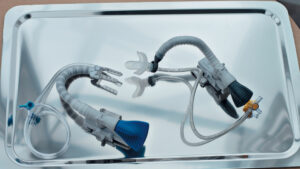Limb ischaemia is a clinically relevant complication of venoarterial extracorporeal membrane oxygenation (VA ECMO) with femoral artery cannulation. No selective distal perfusion or other advanced techniques were used in the past to maintain adequate distal limb perfusion. A more recent trend is the shift from the reactive or emergency management to the pro-active or prophylactic placement of a distal perfusion cannula to avoid or reduce limb ischaemia-related complications. Multiple alternative cannulation techniques to the distal perfusion cannula have been developed to maintain distal limb perfusion, including end-to-side grafting, external or endovascular femoro-femoral bypass, retrograde limb perfusion (e.g., via the posterior tibial, dorsalis pedis or anterior tibial artery), and, more recently, use of a bidirectional cannula. Venous congestion has also been recognized as a potential contributing factor to limb ischaemia development and specific techniques have been described with facilitated venous drainage or bilateral cannulation being the most recent, to reduce or avoid venous stasis as a contributor to impaired limb perfusion. Advances in monitoring techniques, such as near-infrared spectroscopy and duplex ultrasound analysis, have been applied to improve decision-making regarding both the monitoring and management of limb ischaemia. This narrative review describes the evolution of techniques used for distal limb perfusion during peripheral VA ECMO.







